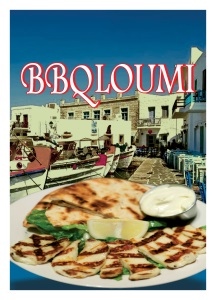Halloumi's battle for likelihood of confusion
Recently The Court of Justice of the European Union (CJEU) issued a decision in the interesting "HALLOUMI versus EUIPO" case which sheds some light on the way likelihood of confusion should be assessed in the case of collective trade marks.

Halloumi is a semi-hard, un-ripened, brined cheese made from a mixture of goat's and sheep's milk, and sometimes also cow's milk. Because of its high melting point it can easily be fried or grilled.
The Foundation for the Protection of the Traditional Cheese of Cyprus named Halloumi ("Foundation Halloumi") is the owner of an EUTM registration for the collective mark HALLOUMI in respect of cheese in Class 29 dating back to 2000.
An EU collective mark is capable of distinguishing the goods or services of the members of the association, which is the proprietor of the mark, from those of other undertakings.
In 2014, the Bulgarian company, M. J. Dairies EOOD, filed an EUTM application for the mark "BBQLOUMI" covering amongst other things cheese and dairy products in Class 29.

Foundation Halloumi filed an opposition arguing that there exists a likelihood of confusion between the collective mark HALLOUMI and the individual mark BBQLOUMI. The EUIPO's Opposition Division and the Board of Appeal rejected the opposition, arguing that the marks at issue only show a low degree of similarity and that HALLOUMI has a weak distinctiveness as it designates a type of cheese. These two factors reduce the likelihood of confusion. Subsequently, Foundation Halloumi brought the case before the General Court (GC).
In short, the GC held that, despite the fact that the goods covered by the marks at issue are in part identical, there can be no likelihood of confusion in the mind of the relevant public since the existence of a low degree of similarity is not, in the case of an earlier mark having a descriptive meaning and therefore having weak distinctive character, sufficient to establish the existence of a likelihood of confusion.
Foundation Halloumi again filed an appeal, this time before the Court of Justice (CJEU). First of all, the CJEU dismissed Foundation Halloumi's arguments that the assessment of the distinctive character of collective marks as well as the assessment of the likelihood of confusion involving collective marks should be carried out in a different way than for individual marks.
The collective marks should not be treated differently which means that, according to settled case-law, likelihood of confusion should be assessed globally, taking into account all factors relevant to the circumstances of the case. A global assessment implies some interdependence between the relevant factors. For example, a lower degree of similarity between the marks could be offset by a higher degree of similarity between the respective goods.
The CJEU ruled that the GC, by concluding that the weak distinctiveness of the HALLOUMI mark combined with the low visual, phonetic and conceptual similarity between the marks, was insufficient to establish the existence of a likelihood of confusion, failed to make the required global assessment as it did not examine whether the low degree of similarity of the marks at issue is offset by the identity of the goods.
Consequently, the CJEU set aside the judgement of the GC and referred the case back to this Court. The latter now has to globally assess the likelihood of confusion between the marks HALLOUMI and BBQLOUMI applying the criteria set in case-law.
This decision may by some be considered as a victory for Foundation Halloumi but in the end may well turn out to be a pyrrhic victory as it is doubtful whether the GC's global assessment of the likelihood of confusion will lead to a different outcome.
Originally published 02 July, 2020
The content of this article is intended to provide a general guide to the subject matter. Specialist advice should be sought about your specific circumstances.

